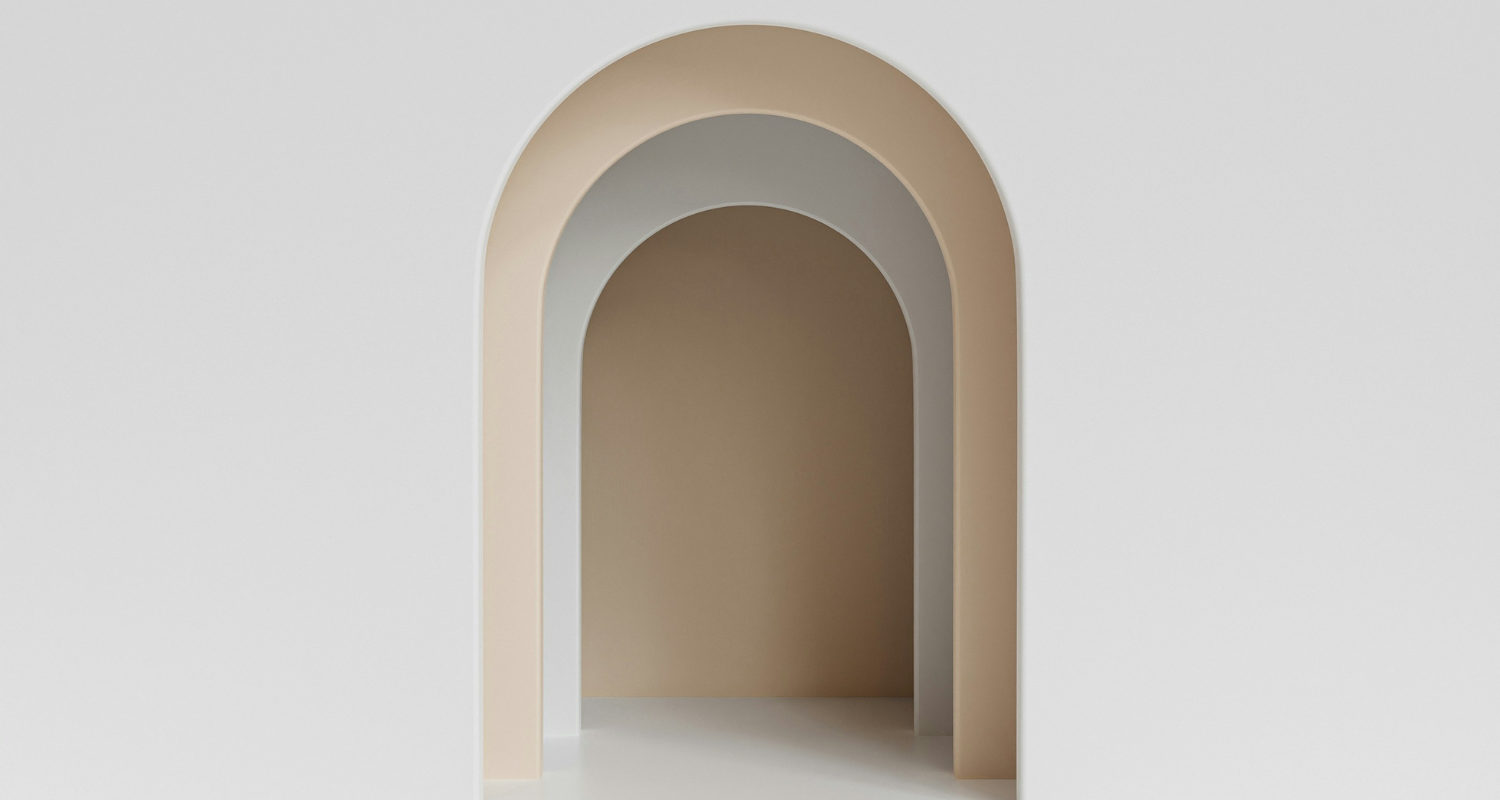Product page optimization is one of the most crucial things you should regularly be doing to boost sales and enhance your customer experience. With proper optimization, it can help transform your online store and turn casual browsers into loyal customers.
Unfortunately, we often see merchants who will optimize their product page once and then forget all about it. Ecommerce is a fast-changing industry. And, if you don’t optimize your product pages regularly, you’ll eventually get left behind.
In this blog, we’ll explore actionable tips on how to optimize your product pages effectively (and regularly). We’ll walk through different elements of your product pages and how you can optimize, test, and repeat until you’ll get the maximum conversion for your products.
Understanding product page optimization
Before we get started, let’s first discuss what product page optimization is and why it is crucial for your business.
What is product page optimization?
Most people think that product page optimization is only about making product pages look more attractive, user-friendly, or informative. While the different techniques aim to do just that, the ultimate goal of product page optimization is to make your product pages act as helpful tool for potential buyers so they can make buying decisions.
Think of product pages as your salespersons on a typical brick-and-mortar store. A salesperson will answer everything a potential customer asks. They will persuade customers to make the purchase. That’s what product pages should be doing for your online store.
It’s about creating an optimized product page that’s engaging and easy to navigate, making your ecommerce site a place people love to shop.
So, how exactly can you turn your product pages into ‘salespersons’ for your online store? Let’s dive into the techniques.
Crafting effective product titles
Product titles are perhaps the forefront of your product page. It’s one of the first things your potential buyers notice before and after they land on your product page. This is why it’s quite a big deal to optimize product titles effectively.
Here are the main things you need to check when creating compelling product titles:
- Tailor fit to your audience and product type: Product titles can be a combination of style, descriptors, brand, functionality and features, technical specifications, use case, and more. It’s crucial to know your target audience based on the type of products you’re selling. For example, if you’re selling appliances, your target audience wouldn’t necessary want to know about the color or style of the appliance compared to if you’re selling fashion items, right? Think of 500W High-Speed Blender with 5 Settings vs. Boho Chic Maxi Dress.
- Balance clarity with creativity: Keywords are ALWAYS important. But, there’s always the catch – keywords should be used naturally and effectively. Otherwise, you’ll just end up keyword stuffing your product titles. Always create a balance between keywords and creativity. Always avoid jargon terms and keep concise, yet appealing. For example, instead of “Cool Gadget,” go with “Wireless Cool Gadget for Smart Home Use.”
- Use keywords effectively: This is probably the most obvious. But, still more people get this wrong. When using keywords on your product titles, make sure that you choose keywords that your target market is looking for and apply them naturally.
- Highlight Value Propositions: Point out what makes your product special in the title. For instance, “Luxury Memory Foam Pillow for Better Sleep” shows off the product’s value.
REI is a great example of using keywords effectively in their product titles. They cater to outdoor enthusiasts, so their product titles are specific and keyword-rich. Instead of just saying “Tent,” they use titles like “REI Co-op Half Dome SL 2+ Tent with Footprint.”
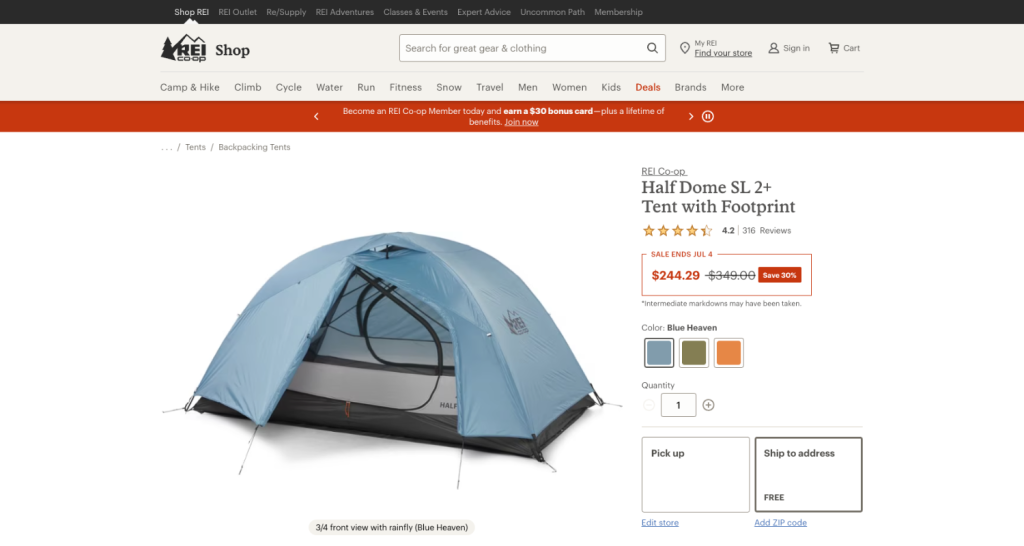
This descriptive approach helps customers quickly find exactly what they’re looking for and ensures better visibility in search engines.
Writing compelling product descriptions
Compelling product descriptions are vital for convincing customers to make a purchase. The content of your product description includes everything your target customers should be interesting in.
Think of product descriptions as what potential customers normally ask to a salesperson about your product, as well as other things you’d normally use to persuade them to make a purchase.
So how do you write compelling product descriptions? Here are some tips to follow:
- Know your target audience: This is probably the most common thing you’ll see in this blog. But, only because it’s the most crucial in anything you’ll do when it comes to product page optimization. Your product description should always tailor fit your target audience. Someone buying an appliance will look for different things compared to someone who is buying a dress.
- Choose what details to include: This, again, should be based on your target audience. Similar to product titles, you can include descriptions, functionality, features, technical specifications, use cases, and other details to your product descriptions. It would be useful if you have data to determine what type of information your target audience is looking for. If you don’t, rely on your knowledge about your target market and determine what information they usually look for when buying your product.
- Make it personal: Regardless of what product you’re trying to sell, it’s always a good idea to craft product descriptions that tell a story. It allows you to connect with your target customer emotionally and allowing them to envision how they’ll use your product.
- Use keywords properly: Similar to writing product titles, incorporate relevant keywords into your product descriptions naturally. Keywords like “product page optimization” should appear in a way that feels organic, enhancing readability. Use variations of your main keywords to avoid repetition and improve SEO. For instance, include terms like “optimize product pages” or “boost product page performance.”
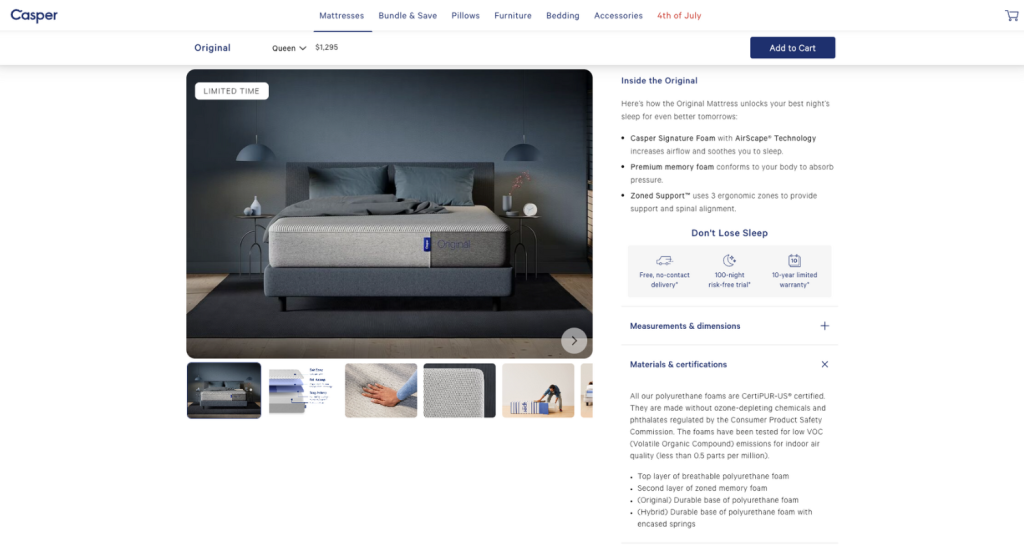
Casper’s approach to product descriptions is a great reference on how to write compelling descriptions. They use detailed and user-friendly descriptions that highlight key features of the products they sell. These descriptions emphasize how the features collectively provide comfort, support, and better sleep quality.
Additionally, Casper includes customer testimonials and real-life experiences, helping potential buyers envision the benefits they will experience. This approach makes the product feel essential for well-being, increasing customer satisfaction and driving sales by aiding customers in making informed decisions. Avoid jargon and keep sentences short and to the point.
Leveraging Visual Content
If product titles and descriptions help convey what you sell, visual content is meant to help potential buyers to envision the product and how they’ll use it. So, it just makes sense that high-quality images and videos can make a substantial difference in your product page optimization efforts.
Here are different visual content you can incorporate in your product page and how to use them effectively.
High-Quality Images
Professional, high-resolution product images showcase your product in the best light. It’s always recommended to provide multiple product shots in multiple angles, especially if your buyers will benefit in seeing your product in different angles.
Always remember that the product images are meant to assist your potential buyers in making a buying decision. Don’t just upload product photos for the sake of aesthetics. Make them useful to your buyers.
Also, your product photos should be optimized in terms of loading speed. This means compressing your images so it loads quickly all without losing its quality.
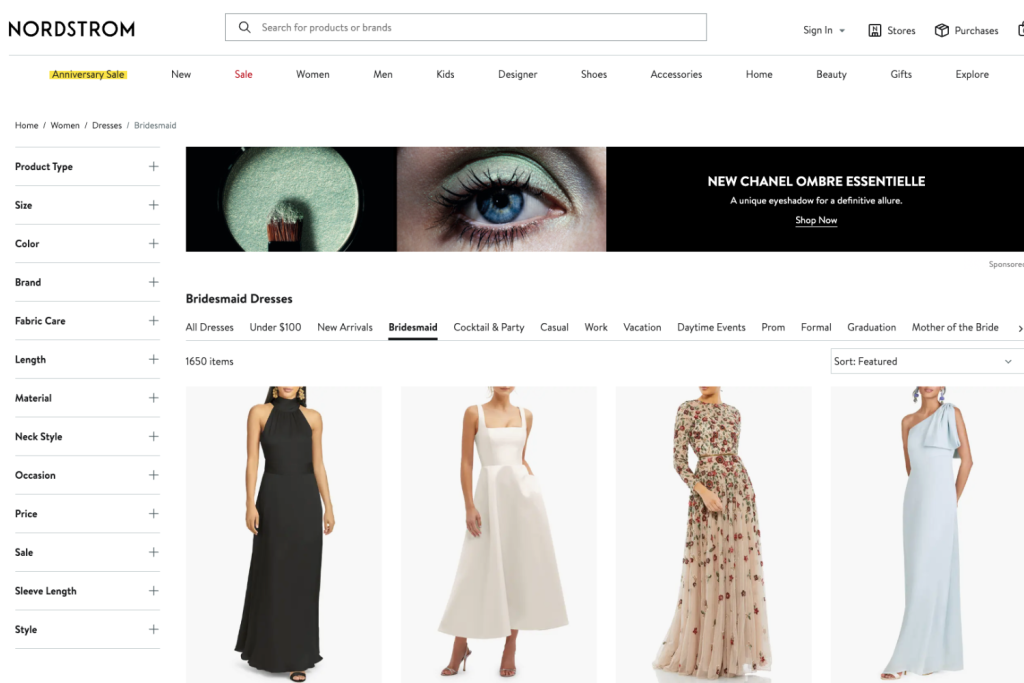
Nordstrom does a fantastic job with their product photos. They use high-resolution images that capture every detail, with multiple angles so you can see the item from all sides. They also provide a zoom feature that lets their potential buyers to get a closer and personal look of the products they’re selling.
Lifestyle Images
Lifestyle photos show your product in action, helping customers picture it in their own lives. These are useful in helping your buyers visualize what they’ll buy from you. It helps depict real-life scenarios. For instance, if you’re selling outdoor gear, show people using it on a hike. This builds an emotional connection and makes your product pages more appealing.

To easily create these impactful images, consider using the Pixc: Lifestyle Photos App. This app helps you transform your product photos into engaging lifestyle images, making it simpler to show your products in real-world settings.
Infographics
Infographics are another great visual tool you can use, depending on the product you’re selling. Infographics are helpful if you want to provide illustrations such as comparing specs, showcasing complex information, or highlighting key features of your products. A good infographic quickly communicates the benefits, helping customers make faster decisions.
Interactive Videos
Product videos offer a dynamic way to present your products. Create short, engaging videos that demonstrate product features, usage, and benefits. You can add interactive videos such as how-to guides or 360-degree views to provide users with richer experience.
Enhancing user experience
Product page optimization isn’t just about improving the actual content of your product page. It also involves enhancing the user experience.
Imagine entering an appliance store. You’re greeted by a salesperson to assist you. Ask you what you’re looking for, provide you with options, and answer any questions you may have. How you perceive that experience will most likely affect your buying decision. Think of online user experience as the same way.
You want to create a seamless, engaging, and enjoyable experience to your potential buyer so they don’t leave your online store (reducing your bounce rate). This eventually leads to sales conversions and repeat customers.
Start by assessing your current user experience. Test your online store as if you’re a potential buyer. Find nuances. Write down pros and cons that you find. Focus on that. Whether it’s load speed or the entire process from looking at the product page up to checking out, make sure that you analyze and improve what you can.
Personalizing the shopping experience
Why are you optimizing your product pages? To make your product page attractive and appealing to your potential buyers. You want your product pages to be irresistible to increase your sales.
One good way to do this is by incorporating personalized shopping experience for your buyers. This comes back to the user experience. You want to make your target market visit your website and make sure they have just the right information, without being too pushy about it.
Here are some strategies you can use to optimize your product page using personalization.
Customized product recommendations
A study on personalized product recommendations found a strong positive association between personalized recommendations and consumer satisfaction. The research highlighted that “personalized recommendations make the shopping experience more relevant to individual customers, significantly boosting sales and customer loyalty.”
Make use of your customer data. Provide personalized product recommendations by analyzing their browsing history and purchase behavior. With this, you can suggest products that match their interests. For example, if a customer frequently buys fitness gear, recommend new arrivals in that category.
Dynamic Content Personalization
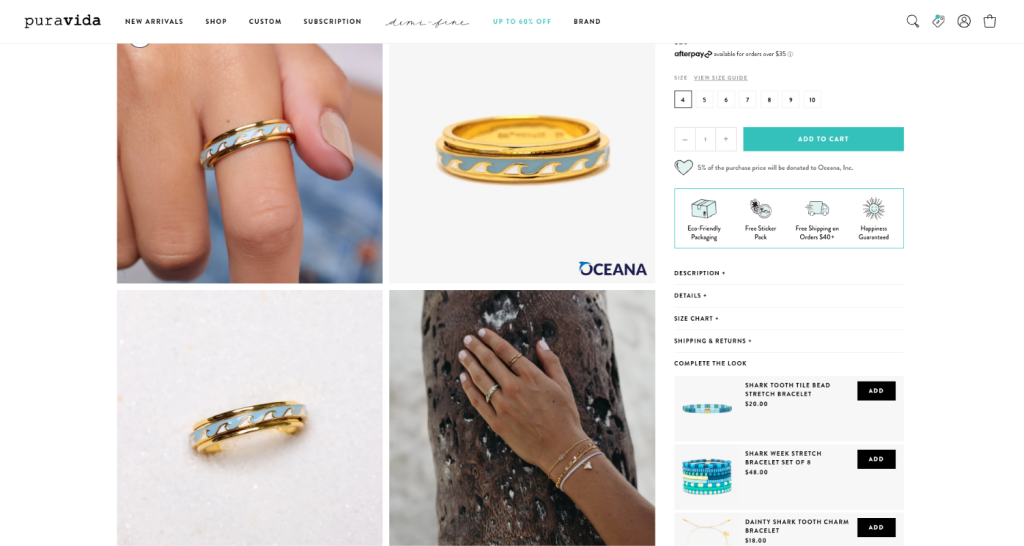
You can also include dynamic content personalization. This changes elements of your product pages based on user behavior. This could mean showing different banners, promotions, or product suggestions tailored to each visitor.
Tracking and Analyzing Performance
Continuous improvement is key to successful product page optimization. Just as we mentioned at the beginning of this article, the only way you can take advantage of the benefits of optimized product pages if you do this regularly.
So continuously apply the tips we described above along with tracking and analyzing the outcomes of your tests.
Key Performance Indicators (KPIs)
Start by identifying and monitoring the important KPIs for your product pages. These might include conversion rate, bounce rate, average time on page, and cart abandonment rate. Regularly reviewing these metrics helps you understand how users interact with your pages and where improvements can be made.
A/B Testing
A/B testing is a valuable method for optimizing different elements of your product pages. Test different headlines, images, CTAs, and layouts to see what performs best. Small changes can have a big impact on conversions. Continuously test and refine your pages to ensure they are as effective as possible.
Final thoughts…
Mastering product page optimization is all about paying attention to details and focusing on the user experience. By implementing these strategies, you can make your product pages shine and boost sales.
Continue optimizing your product pages. Keep experimenting, stay flexible, and always put your customers first. The more you know about your customers, the better you can optimize your product pages suitable for your target market.

